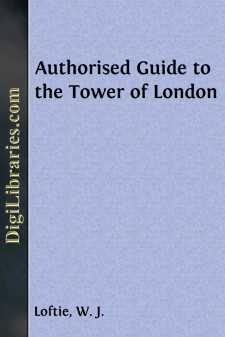Categories
- Antiques & Collectibles 13
- Architecture 36
- Art 48
- Bibles 22
- Biography & Autobiography 813
- Body, Mind & Spirit 142
- Business & Economics 28
- Children's Books 17
- Children's Fiction 14
- Computers 4
- Cooking 94
- Crafts & Hobbies 4
- Drama 346
- Education 46
- Family & Relationships 57
- Fiction 11829
- Games 19
- Gardening 17
- Health & Fitness 34
- History 1377
- House & Home 1
- Humor 147
- Juvenile Fiction 1873
- Juvenile Nonfiction 202
- Language Arts & Disciplines 88
- Law 16
- Literary Collections 686
- Literary Criticism 179
- Mathematics 13
- Medical 41
- Music 40
- Nature 179
- Non-Classifiable 1768
- Performing Arts 7
- Periodicals 1453
- Philosophy 64
- Photography 2
- Poetry 896
- Political Science 203
- Psychology 42
- Reference 154
- Religion 513
- Science 126
- Self-Help 84
- Social Science 81
- Sports & Recreation 34
- Study Aids 3
- Technology & Engineering 59
- Transportation 23
- Travel 463
- True Crime 29
Authorised Guide to the Tower of London
by: W. J. Loftie
Description:
Excerpt
THE TOWER OF LONDON.
GENERAL SKETCH.
The Tower of London was founded in 1078, by William the Conqueror, for the purpose of protecting and controlling the city. To make room for his chief buildings he removed two bastions of the old wall of London, and encroached slightly upon the civic boundaries. Part therefore of the Tower is in London, and part in Middlesex, but it forms, with its surrounding fortifications, a precinct in itself which belongs neither to the city nor the county. It covers an area of 18 acres within the Garden rails.
The present buildings are partly of the Norman period; but architecture of almost all the styles which have flourished in England may be found within the walls. It is well to remember that though the Tower is no longer a place of great military strength it has in time past been a fortress, a palace, and a prison, and to view it rightly we must regard it in this threefold aspect.
It was first built as a fortress, and has a central Keep, called the "White Tower." The Inner Ward is defended by a wall, flanked by thirteen towers, the entrance to it being on the south side under the Bloody Tower. The Outer Ward is defended by a second wall, flanked by six towers on the river face (see Pl. IX, X and XI), and by three semicircular bastions on the north face. A Ditch or "Moat," now dry, encircles the whole, crossed at the south-western angle by a stone bridge, leading to the "Byward Tower" from the "Middle Tower," a gateway which had formerly an outwork, called the "Lion Tower."
The Tower was occupied as a palace by all our Kings and Queens down to Charles II. It was the custom for each monarch to lodge in the Tower before his coronation, and to ride in procession to Westminster through the city. The Palace buildings stood eastward of the "Bloody Tower."
The security of the walls made it convenient as a State prison, the first known prisoner being Ralf Flambard, Bishop of Durham, who had been active under William Rufus in pushing on the buildings. From that time the Tower was seldom without some captive, English or foreign, of rank and importance.
In the Tudor period the "Green" within the Tower was used on very rare occasions for executions. [.] Condemned prisoners were usually beheaded on
Emerging from the Mark Lane railway station, the visitor obtains an excellent view of the great fortress. Within the railed space of Trinity Square, the first permanent scaffold on Tower Hill was set up in the reign of Edward III, but the first execution recorded here was that of Sir Simon Burley in 1388. Here also were beheaded, among others, Dudley, the minister of Henry VII (1510), his son the Duke of Northumberland (1553), his grandson, Lord Guildford Dudley (1554), Cromwell, Earl of Essex (1540), More and Fisher (1535), Surrey (1547), and his son, Norfolk (1572), Strafford (1641), and Archbishop Laud (1645), and the Scotch lords in 1716, 1746, and 1747, the last being Simon, Lord Lovat.
The Tower moat is immediately before us. It is drained and used as a parade ground....


